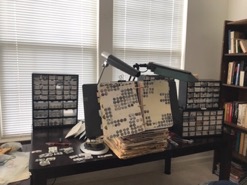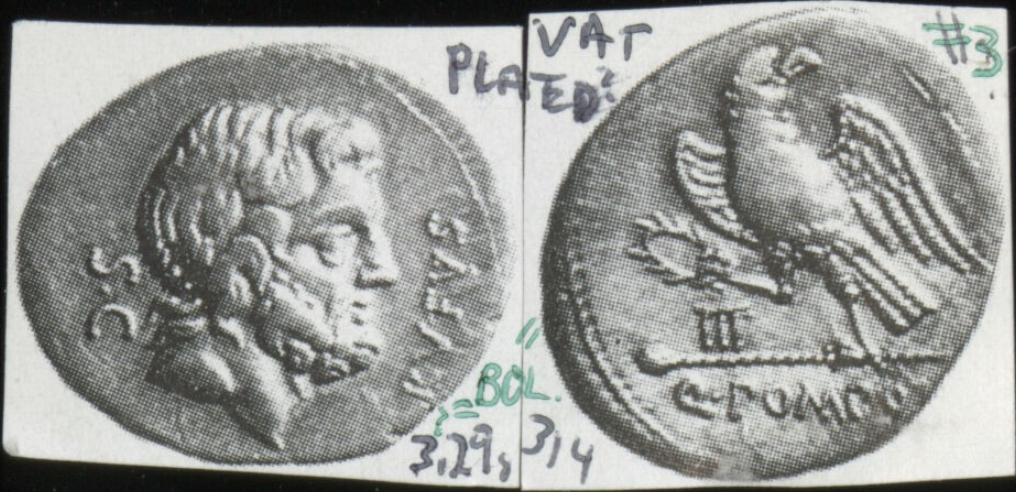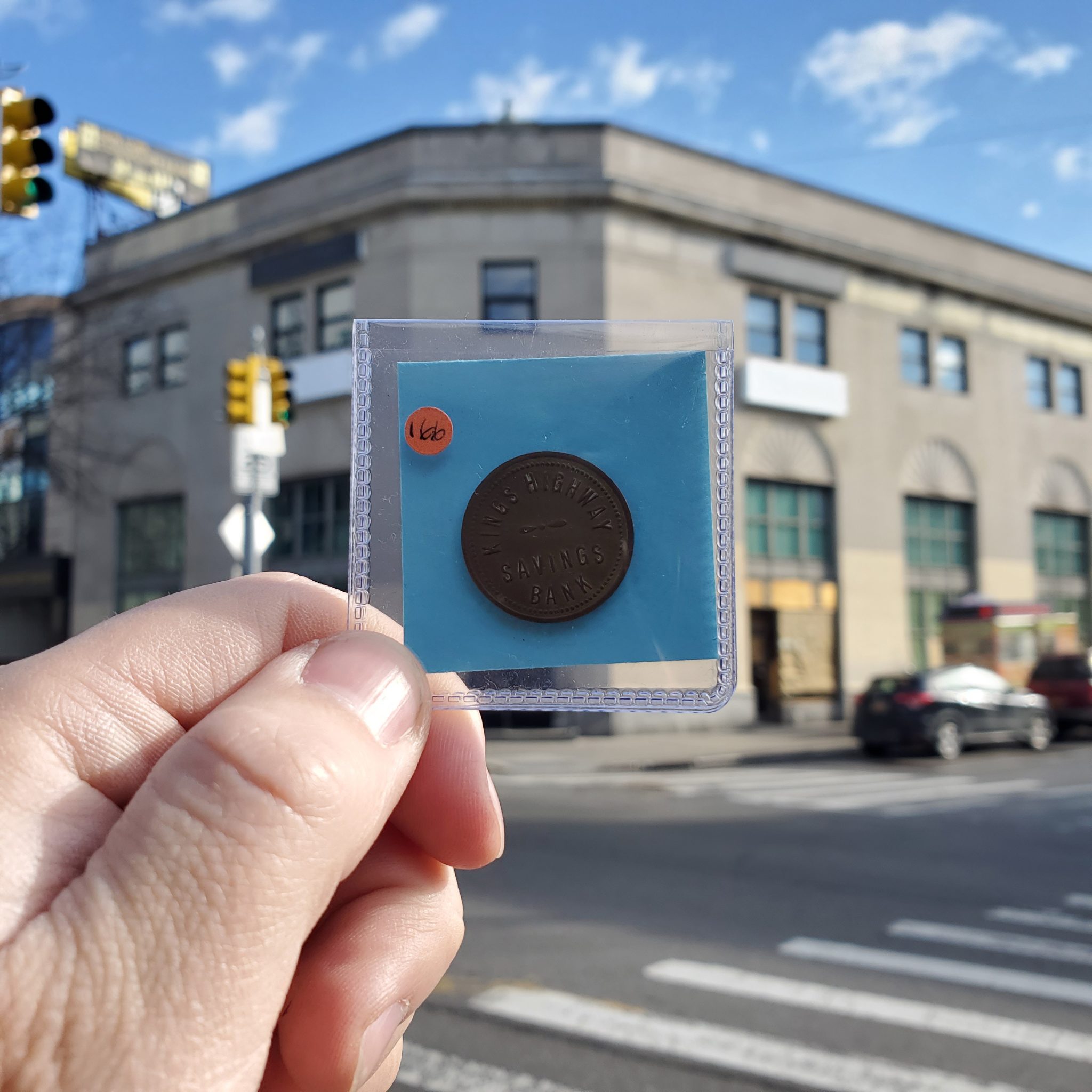Binders of Richard Schaefer's Roman Republican Die Project (RRDP) now online
by Lucia Carbone, Assistant Curator for Roman Coins, American Numismatic Society; and Liv Yarrow, Associate Professor of Classics, Brooklyn College
The practical problem is that counting all the dies used to strike during the Republic would be the work of several lifetimes.
—M. H. Crawford, Roman Republican Coinage, 641
In 1974 M. H. Crawford authoritatively stated the virtual impracticability of comprehensive die studies encompassing the whole Roman Republican monetary production. For this very reason, he turned to estimating monetary production through hoard studies (e.g., RRC Tables L–LVII). This method was further developed by, among others, Kris Lockyear, who further expanded Crawford’s archive of Roman Republican hoards, produced a landmark statistical study on the patterns of monetary production based on these data, and continues to use the data to improve our understanding of the relative chronology of the series.
However, about 25 years, ago Richard Schaefer began to collect systematically images of all struck Roman Republican issues included in Crawford’s Roman Republican Coinage. While no precise final count is available yet, it is estimated that Schaefer has documented and analyzed some 300,000 specimens in the Roman Republican Die Project (RRDP). His archive thus proves that it is indeed possible, even if extremely challenging, to create reliable quantitative data for the monetary production of the Roman Republic. Schaefer’s study encompasses all struck Roman Republican issues included in Crawford’s Roman Republican Coinage with a few logical exceptions, like the large issue of C. Piso L.f. Frugi (RRC 408, c. 61 BCE redated based on the Mesagne hoard) for which Charles Hersh had already produced a complete die study. For each issue of struck coins, Schaefer determined the die links for either obverse or reverse. The goal of this project has been to collect enough images and identify enough dies to achieve 90% or better coverage. Fig. 1
Schaefer’s notations on each clipping record the image source, as well as any and all information in the source such as weight, axis, diameter, and his assigned die identifier (a number or a letter). The specifics of Schaefer’s collecting and analysis methods are detailed in our article for the ANS Magazine “Opening access to Roman Republican Dies”. Schaefer’s archive consists of 14 three-inch three-ring binders. Fig. 2
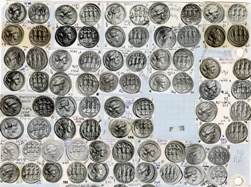
These hold at minimum the two best examples of all known dies for all issues covered by RRDP and on occasion additional specimens. Of course, the binder only has one example in cases where a die is only known (so far!) from a single coin. Further examples of the known dies represented in the binders are stored in die order in small drawers (“output” or “output clippings” in the evolving language of RRDP) , each of which can hold up to four hundred images. These clippings should join the binders online by the end of summer. Fig. 3
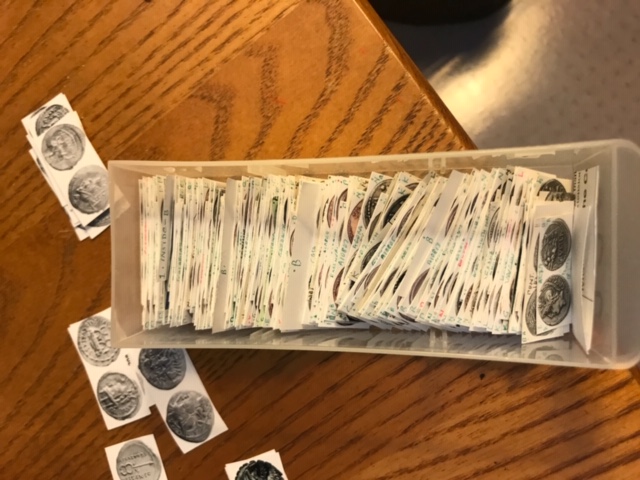
The same type of drawers and the same organization is used to store a special sub-set of thirty-five types of particular interest to those interested in the statistical analysis and quantification of surviving dies versus the original number of dies. These types make up a collection called ODEC for short (One Die for Every Control-Mark). As Schaefer says, around 2000 he “realized the ODEC issues could tell us how many dies we know out of the original total; inversely, they tell us how many dies we still have not found. For example, if an ODEC issue has control numbers 1 to 150, the missing numbers give us the number of dies still not found.” Readers familiar with the importance of Theodore ‘Ted’ Buttrey study of the P. Crepusius denarii will already be acquainted with this type of evidence and how it has taken center stage in debates over quantification. ODEC only includes issues that are large enough to be statistically meaningful; thus it excludes the smaller issues which are treated in the binders as ordinary types (RRC 376, 398 and 399) and issues like RRC 350A/3 which is huge but the control letter is too often off the flan and thus the current number of specimens in RRDP is statistically too small. Schaefer has also documented that not all of thirty-five types considered to have only one control mark per die by Crawford actually fit that description; of these, quinarii issued by a P. (Vettius?) Sabinus in c. 99 BCE (RRC 331) have by far the most symbols repeated on different dies. Another curiosity that Schaefer discovered is the issue of serrated denarii by C. Naevius Balbus (c. 79 BCE, RRC 382); control numbers 1–39 are all represented by two or more dies, but almost all numbers 40–226 are represented by only one die. Schaefer’s work on ODEC will prove invaluable for testing and verifying new and existing statistical models for quantification. Fig. 4 The ODEC images will be made public at the same time as other clippings.
In early 2019 the ANS partnered with Schaefer in the Roman Republican Die Project, aiming at making available to the public what is likely to be the largest die study ever undertaken. The first part of this project consisted of the digital preservation of Schaefer’s archive and was completed in June 2019. In this initial digitization phase, we aimed to publish the binders and the clippings, assembled as TEI files of facsimile images, published the ANS archival platform, Archer and linked to CRRO. Fig. 5. The binders, the largest part of Schaefer’s archive, are now online and available to the academic community. We aim to have all further images accessible by the end of the summer.

The second phase of this project consists in the quantification of Schaefer’s die counts as recorded in these images. The whole process entails the creation of spreadsheets for each RRC type, including a listing of each obverse and reverse die, and a number of occurrences for each die. Eventually this statistical data will be published and made accessible through Coinage of the Roman Republic Online.
We envision a much more ambitious third phase after all the existing data is publicly available in which we create a research group and digital tools to expand on Schaefer’s work, incorporating new specimens and increasing coverage of all issues.
The die studies realized by Richard Schaefer and now digitized and organized in ANS Roman Republican Die Project (RRDP) are an invaluable asset to the study of Roman Republican History. They could prove instrumental to show A) the accuracy of the figures provided by ancient sources and B) the reliability (or not) of Crawford (and later) production estimates based on hoard counts.
Ready to see the Schaefer’s binders for yourself? There are multiple ways into the material:
If you want to view the whole binders just as they are on Schaefer’s office, you can flip through each binder and zoom in and out directly in Archer, the ANS archival platform. Below the page viewer, you will find an index of the binder organized by RRC number that allows you to jump to a specific type in that binder.
If you are interested in seeing what Schaefer’s archive can tell us about a specific coin type, start with CRRO. Search by RRC number. When you open a type, look for a link at the very top that says Annotations. This will take you to the bottom of the page and then let you jump to just the right pages of the binders in Archer. Fig. 6.

The numbers listed under sections link to the pages in the binder with images of the type (yellow arrow). Clicking the binder name will take you to the first page of that binder (orange arrow).


